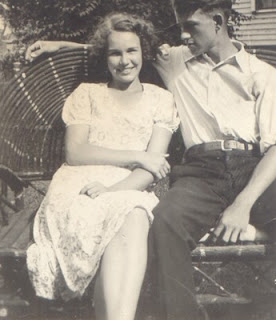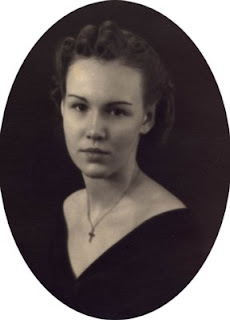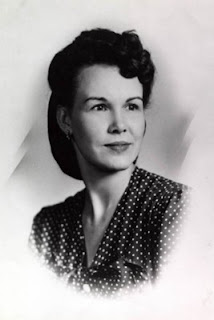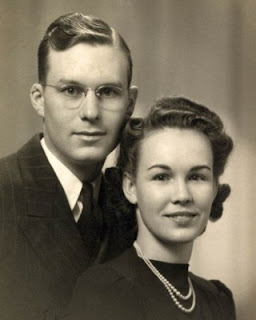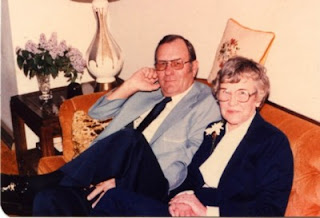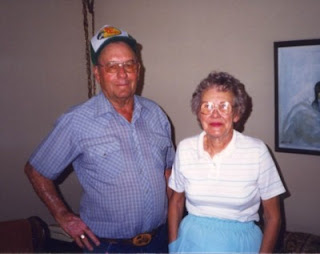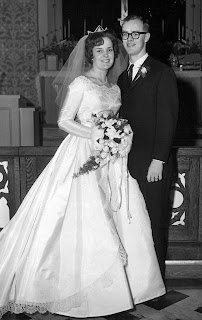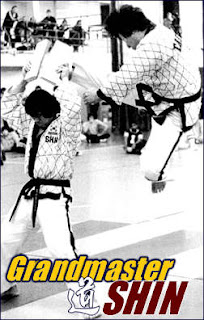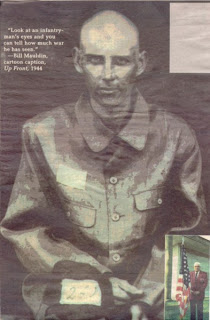 One of the "Battling Bastards of Bataan"
One of the "Battling Bastards of Bataan"
J. S. Gray was married to a dear cousin of mine. I had met him several times, and had the distinct honor to have breakfast with him in April of 2002. He died in 2004.
This post is very long. Read it if you're interested. No harm if you're not.
Sgt. J. S. Gray, Former Japanese prisoner of war, in 1944; and 52 years later (inset).
From:
The facts on File Encyclopedia of the 20th Century:
Bataan Peninsula – On Luzon Island in the Philippines. During World War II, Us forces under Gen. Douglas MacArthur retreated here after Manila fell to Japanese forces. In April 1942, some 12,000 American and 64,000 Philippine soldiers surrendered to Japanese forces in Mariveles, a town on the Bataan Peninsula. It was the largest surrender of US forces in history. Some Americans retreated farther to Corregidor an island off the south end of the peninsula, but they, too surrendered in May 1942 after fierce resistance. The Japanese forced their US and Philippine prisoners to march to northern Luzon under extremely desperate conditions; some 10,000 died and the march earned notoriety as the Bataan Death March. In February 1945, US forces re-conquered Bataan. Today, the area of the peninsula overlooking Manila Bay to the east is a Philippine national shrine.
J.S. Gray, 77, sits in the comfort of his avocado-green kitchen, nestled in his home in Baton Rouge. His bright-eyed wife, Alyne, sits across from him, poised with Kleenex. His story does not come easily, but it is as indelible as the scars on his wrist and torso. It is the scourge of the POW – that fitful coexistence with the ghosts of the past.
At the age of 20, Gray was weary of the uneventfulness of farm life in Jonesville, La., where he grew up. Standing 6’2”, 202 lbs., he was a “big, strappin’ boy” by anyone’s standard, a fine specimen for the military. “I could knock down a mule,” Gray said.
Restless and in search of a finer life, he decided to enlist. “I got tired of plowing in the fields, cotton and all that, so I decided I would join the Army/Air Force (it wasn’t separate at the time),” Gray explained.
One day in 1939, he and a friend caught a ride to Shreveport with another boy, Louis Boone, who had relatives there. Boone said he would take them to Barksdale Air Field to enlist. Only two years later, Gray would discover that he had inadvertently set the course for a journey that would take through Hell and back.
But that was later. The boys signed up. Life was good. Gray stayed at Barksdale for almost two years. The Army was growing by leaps and bounds. He got a raise and a promotion, to corporal. “I thought this was a pretty good place to be,” Gray said. “I got a $5-a-month raise. It (the salary) was $21 a month when I started out. I made an allotment to Mama for $5 each month. And that went to her all through the war,” he said proudly.
From Barksdale, the men were moved to Hunter Field in Savannah, Ga. The quarters at Hunter lacked creature comforts, but they were still satisfactory for a pack of boisterous, young males. “We had to pitch a tent. That’s how we occupied Hunter Air Field – in a tent.”
Gray was in the “ordnance” (a collective term for heavy mounted guns; military weapons of all kinds), similar to a squadron. “We were called an ordnance company,” Gray explained. “In those days we handled arms, ammunition, bombs and all that for all of the airplanes. We did the synchronizing for all of the guns and the planes.”
They underwent extensive training until fall 1941, shortly before the bombing of Pearl Harbor. Although it had gone undetected (or ignored) by the enlisted men, the mood among the officers was changing. Even when it was announced that some 300 men were being added and the ordnance company was being divided into three separate companies, no one found it unusual.
“We didn’t know what was taking place. It was all Greek to us,” Gray said. “We were still having a good time. We weren’t worried about the war. It was only in Europe then.”
In the midst of training, Gray’s company received notice that they were being moved to the Philippines. To Gray, who had never been out of the United States and “hardly across the Mississippi River,” this was the quintessence of the life of the worldly enlisted man.
They left Savannah in style – aboard the SS Calvin Coolidge, a cruise boat. “I had a State room by myself,” Gray said. And another promotion under his belt – to sergeant. But there were more inauspicious signs: halfway from Hawaii to the Philippines, the sister ships that were following with the ordnance company’s airplanes suddenly turned around. “We were up on deck one day and we saw them all turn south. We didn’t know what was happening,” Gray said.
“We started traveling in a zigzag motion, and it was all-lights-out at night. Something was up. Every one of us had a loaded .45 on our hip. But we didn’t know what was going on.”
On Thanksgiving Day 1941, just 17 days before the bombing of Pearl Harbor, they landed on the Philippine Islands at Luzon. “When we got there, we would go to Manila at night, to the honky-tonks and dance,” Gray said. “But we still had a .45 on our hips.”
One night it all made sense. “We were out on the town one Saturday night and the MPs suddenly came in and told us, ‘Every soldier head for your barracks. Pearl Harbor has been bombed by the Japanese.’ ”
“Man, we all headed for the barracks. When we got there, some of them didn’t even know what was happening. It took a couple of hours for everyone to wake up, and then the officers had to get their orders. By daylight, we had loaded up all of the bombs and small-arm ammunition at Douglas Field.”
The men were en route to Clark Field with the artillery, but it was too little, too late. By then, the Japanese were bombing the whole area. Clark Field was blanketed with projectiles. Anything that could fly was destroyed.
The men went back to Nichols Field in Manila to dodge shrapnel and lie low in their tents. The Philippine Islands were taking a beating from the heavy bombing by the Japanese forces.
Despite the fact that enlisted men viewed the attack as “sudden,” it had been anticipated by their superiors. In his book Surrender and Survival: The Experience of the American POWs in the Pacific 1941-1945, E. Bartlett Kerr explained that the American military had prepared long and hard for a Japanese attack. The American plan for defending the Philippines was called “War Plan Orange-3” (orange was a color code for Japan; other potential enemies were assigned other colors). Officials stated in the plan that they anticipated a Japanese attack on Luzon, which was the principal island of the Philippine group. Luzon was important because it provided a base from which Japanese forces could seize the port city of Manila, which had a modern, strategically located harbor.
The US plan recognized the superior military prowess of the Japanese forces. Part of the strategy called for abandoning Manila to the enemy and then withdrawing to lines on the Bataan Peninsula, an area dominated by jungles and mountains on the west side of Manila Bay. The American troops on Bataan would provide land protection to nearby Corregidor and the three other heavily fortified islands whose guns protected the sea approaches to Manila Bay. The plan called for Bataan and Corregidor to be defended to “the last extremity.” Ideally, this would buy enough time to send an American fleet to steam out of Pearl Harbor, meet and defeat the Japanese fleet, and then proceed to the relief of the Philippine defense forces.
It sounded good in theory, but it was a plan that few officers – if any – believed in. The salient fact ignored by the plan was that there simply were not sufficient troops and equipment to defend the Philippines for more than six months.
Perhaps no on knew this better than the troops holed up in the Bataan jungle, waiting for the bombing to stop. After a week passed, thy received grim orders: they were to continue their service as infantrymen. No questions asked. Infantry. With that, they were sent to the front.
Within 24 hours, Japanese forces made a land invasion of the Philippines. From that point, any semblance of order disintegrated. It was mass pandemonium. As Gray said: “No one knew what to do or how to do it or anything else. We would go back and forth to the front, through the lines, sometimes behind the lines, and then we’d have to fight our way out,” Gray said.
There were approximately 12,000 Americans and 64,000 Filipinos fighting in the area. Japanese Gen. Masaharu Homma was effectively driving them into the southernmost tip of the peninsula, and pushing their backs into the sea.
After fighting in the jungle for two weeks, the soldiers’ rations were cut in half. Two weeks later, rations were halved again. And two weeks later, they were halved again. After that, they began eating whatever they could find in the jungle – iguanas, monkeys, a rice paddy here and there.
“We went on like that for a while,” Gray recalled. “Then we started losing weight. “We were past scared. We had eaten all of the horses, the mules, dogs. Every day there was a new rumor: he Americans are on their way. Their boat just landed. Just hold out. Hold out.
March 11 brought the final blow: Under presidential orders, Gen. Douglas MacArthur left Corregidor for Australia. Despite the facts that he issued his famous, “I shall return,” the American troops lost their last sliver of hope.
Things went from bad to worse. Thousands of men had dysentery or malaria and nothing to eat. The hospitals were full. As long as a man could walk, he went back to the front to fight.
“This was our last stand,” Gray said. “We fought until we couldn’t do anything more. We kept moving back, moving back, and finally, we were at the sea. We were backed up at the sea.”
It was time to cut their losses. A runner brought back the news: “The captain is going to surrender.” Gray was asked to gather the ordnance’s ammunition. He set it up in dumps and blew them up the day before they surrendered. It was the final punctuation of a bitter string of events.
On April 9, 1942, the men marched up to the battle line to surrender. There were six Japanese soldiers lined up across the road. There was jungle on one side, water on the other. “They searched us and took everything they could get off of us,” Gray said. “The ones in the front of the line passed word back to us that thy were even taking dog tags, so I pulled up the innersole of my shoes and put a dog tag under each innersole. That is the only thing that I went to the Philippines with that I got back to the States with.”
According to Billy Keith in Days of Anguish, Days of Hope, Japanese intelligence had originally calculated that here would be 20,000 prisoners instead of the 80,000 they captured. The guards were frantic as they tried to herd thousands of men into groups of 300. There was nothing to do but try to march them into camps as soon as possible. For some, the march would last for weeks. With dog tags in place, Gray started the infamous Bataan Death March.
“You could look at Corregidor sitting right out there in the bay,” Gray said. “As soon as they’d fire at Corregidor, a scout on Corregidor would pick up that flash of the gun and here would come 16 inches (of projectile) back at us. It would sound like a train coming through there. Imagine what a 16-inch projectile tumbling in the air sounds like. There would be somebody dead or killed and we couldn’t go see about them. "
No one knows the exact number of soldiers on the march. It is estimated that there were 64,000 or 65,000 marchers. Likewise, the number of survivors is indeterminable. Between 1941 and 1945, POWs were transported back and forth, to different prison camps on the islands. “There were thousands of us,” Gray said. “It was miles long. There were guards on each side of us about every 10 yards, and ach one had his bayonet on his gun. If you picked up anybody to help him walk, they would snatch him up and take him out of the line and kill him right there in front of you. That was going on all the time. The Filipinos would try to throw us food and they would kill every single one of them.”
And it was hot. In an interview published in Donald Knox’s Death March, Pvt. Leon Beck described the heat in these terms: “ . . . The weather was hot, hot, hot. The sun comes up hot, and it goes down hot, and it stays hot all night long. It was just plain hell hot, the humidity was high, and the dust was everywhere, trucks moving alongside, raising more dust and confusion.”
There were no restrooms and no one was allowed to stop. The human waste on the road mingled with the blood from the feet of the many barefoot marchers. Dysentery was rampant. “We were filthy dirty. With mess all over us and walking through it,” Gray said. “The further you got on the walk, the more Americans, Japanese and Filipinos were laying on the side of the road, dead.”
Gray was given a half-cup of canteen water each night with chlorine tablets added to kill the germs. “It tasted like chlorine,” Gray grimaced. “It was horrible.” By the end of the first day, they had marched some 25 miles. After the fourth day, time began to lose meaning. Food, water and staying alive were the top priorities.
Gray sucked on pebbles or a button from his shirt to secrete saliva for water. At night, they would stop to rest for only a few hours. In the book Some Survived by Manny Lawton (his personal account of the march), the overnight stops were described as “uneasy” and “tense” at best.
“Though we were outdoors, the air was fouled by human waste in and around the open pit latrine. It seemed that throughout the night half of the group was milling around in search of water or the latrine. Those who tried to sleep were constantly being stepped on or stumbled over.” In the morning, many did not wake.
Gray’s first stop was at a narrow-gauge railroad. The men were to be transported to a prison camp several kilometers away. “It’s like a miniature railroad,” Gray explained. “The cars are about half the size of a regular railroad. We were packed in there so tight that the Japanese guards would have to get in the car and push and push on the door until it slammed shut.”
The men were jammed in the cars standing up. “We couldn’t move,” Gray said. “There were no restroom facilities on the train. Somebody would say, ‘I’m sorry about that. I couldn’t control it.’ We stayed there for a couple of hours until they got us all loaded up, and then we rode 12 kilometers to another place where they made us get off. Some smothered to death. We got out of that car and the dead fell. From all around you. They had died standing up.”
After the men were unloaded, they began their march to the prison camp. Along the way, Filipino ladies would try to throw the prisoners food, rice rolled up in banana leaves. And one by one, the guards shot them down.
“They killed them, and the babies, on the side of the road,” Gray said. “On that death march, I’d see one guard take a baby out of a woman’s arms and throw it to another and he would catch it on his bayonet and throw it to another one,” Gray’s voice rasped with emotion. “So, we marched into this camp. When we got there, there was one faucet, for thousands of us. It was a stream about a 1/4 mile wide. There was a constant line for water. They would get a little bit of water and then get back in line. Twenty-four-hours a day.” By that time, most of the men were in rags. Few of them had shoes.
After a few days at the camp, Gray – whose husky frame wasn’t showing emaciation at the same rate of his fellow soldiers – was put on burial detail. For 24 hours. “We’d dig a hole 5 or 6-feet deep and a guard was right behind you, pushing the bodies off your shoulder into the hole. Some of the people weren’t dead. They would say to me, ‘Don’t leave me here. Don’t leave me here.’ But you couldn’t do anything about it. And then the guards would cover them up. They covered them alive.”
You couldn’t stand up to them because you were outnumbered. They would have put a bayonet in us and pushed us in there. We were too weak to fight them hand-to-hand.”
At Night, the men were given lugao to eat. “It was something like cornstarch,” Gray said. “It tasted terrible. But you’d have to get it down some way. Some of the boys couldn’t do that. They’d gag.”
The days and nights blended into an endless, severe course in survival. Eventually, the prisoners were loaded up again, this time headed for Cabanatuan. I have no idea how long we stayed at that camp,” Gray said. “Time was running on by. My main objective was to get something to eat.”
By then, the rainy season had started. Every day, rain poured down on the men. The graves in which they buried hundreds of bodies began slowly filling with water. “At night, you would hear the dogs howling, barking and fighting,” Gray said. “And you’d get up the next morning and you’d find arms here, legs there, head, and this and that here and yonder. And we’d have to gather it up and bury it again.”
One night, three men sneaked out to trade with the Filipino people. On the way back in, they were caught. The following morning, the guards brought all of the prisoners out of the barracks and marched the three men before them. “They lined the three men up and had them dig their own graves,” Gray said. “Then they had to kneel down. Their hands were tied behind them. They leaned over the hole and …sssssllllkkkk. The guards cut their heads off. With a saber.”
Cruelty was an epidemic. Several days after the men were executed, Gray was on his way to draw water. He passed one of the guards, who motioned him over. “He had this (human) head fixed up with a grass rope tied around it and attached to a bamboo pole. He reached down, picked up the pole and put it on my shoulder and shouted, ‘March.’ I had to march up and down the barracks with that head on my shoulders. The brains were coming out of it and going down my back. I still see it at night. I have dreams about it at night.”
The prisoners endured life at Cabanatuan for many weeks and then were marched through Manila to be loaded on a ship en route to Davao, on the island of Mindanao. “We got there and they put us in this camp that was like Angola (Louisiana State Prison),” Gray said. “They raised potatoes, pumpkins, coffee, bananas, avocados. If you were lucky and got a good guard, you could go on detail and they would let you go out in the fields and eat.”
It was during gray’s stay at Davao that 10 American officers made their famous escape. One Sunday morning the officers went out to the field under the pretenses of getting some extra detail duties completed. That night, they didn’t return. The guards counted prisoners until the early hours of the morning, but they were still missing 10. Where were those 10 Men?
The officers escaped to the jungle and eventually made their way back to the United States. Their accounts – which they later published in a book about their escape – were the first hard evidence the Americans had of the horrific mistreatment of prisoners of war. After the escape, the gates were closed and guards accompanied the prisoners at all times.
While gray was working on road detail, he developed “dry” beriberi. His feet and legs turned red and burned like hot charcoal briquets. The disease steadily worsened. “My skin looked like a balloon full of water,” Gray said. He grew so weak he couldn’t go out on detail any more. His food intake was scaled back to half rations.
A Japanese doctor in the camp from UCLA Medical School had taken a particular interest in the prisoners. He had been forced to serve in the Japanese army while visiting his grandfather in Japan. When war broke out, officials there refused to let him go back to the US. His fluent English allowed him to communicate freely with the prisoners. He knew each of the 1,200 men by name. He was worried about Gray. “He walked up to me one day and said, ‘Gray, how are you doing?” And I said, ‘I don’t think I’m going to make it.’ He said he’d have the cooks pick me up and let me swat flies in the kitchen. I could just sit there all day and swat flies.”
With the Japanese officers thinking Gray served a purpose – to swat flies – and close proximity to food, the doctor thought his condition might improve. “I sat there and the American cooks in the kitchen would walk by and put food in my mouth,” Gray said. “They’d say, ‘Gray open your mouth’ and then cram something in there. They couldn’t be seen feeding me.” Gray started getting better. Eventually, he was allowed to work as a rice cook in the kitchen.
While they were at Davao, a Japanese officer approached a group of American prisoners one day and handed them their flag. “He said, ‘This is your flag. We don’t want to destroy it. We want you to destroy it,’” Gray said. “We Couldn’t. We saw them tear it down at Bataan when we surrendered. We didn’t know what to do. We debated the issue and decided that we would cut the stars out – there were 48 then – and keep them, and burn the rest of it. If we got caught, whoever got caught with them, off would come their head. That’s the way it went.”
The men all vowed to keep the stars together. Over the course of their imprisonment, they would shift the stars to different ones, to avoid arousing suspicion. Someone always had the stars. They were always together.
In July 1944, the prisoners were moved back to Manila to board a ship for Japan. It was just a few days prior to Gray’s birthday on July 14. “On my birthday I was sitting in the hold (in the bottom of the hull) of this ship and it was hot as hell.” Gray said. There were hundreds of men jammed in the hold, sitting on the floor with their legs interlaced. The “latrine” consisted of five 1-gallon buckets that spilled on the floor and the men.
“It was dark and damp and hot,” Gray said. “There was always somebody hollering or trying to cut their wrists. They went wild. Sometimes they would just lunge at each other and you’d have to pull them off of one another. And try to get them back to their senses. People that did that wouldn’t last long afterwards. They’d be dead in a few hours.”
The bodies were left in the hold to rot for three, sometimes four days before they were taken out. They spent 60 days in the hold of the ship. Night and day. “We never left that hold,” Gray said.” “Sixty days on the China Sea. We broke down out there. It was just horrible.”
They finally arrived in Japan and were sent directly to Yokkaichi. Gray lived at that prison camp for six months. His number was 260. “We were nothing. Everybody lost their names, everything. There was no identity.” Gray was also a shell of his once husky frame – having dropped from 202 lbs. to 108.
Only six months before the war ended, the prisoners were shipped to Toyama. It was approaching winter in Japan and many of the men were dressed in little more than g-strings from their days in the Philippines. They shared blankets and huddled together to retain body heat.
While there, Gray was caught stealing rice. The guards beat him until he passed out. Then, they tied him up and hung him from the rafters. “I was tied so that my toes barely touched the ground. I would stand on my toes to give my wrists a little relief and then hang to give my feet a little relief.” The guards kept a watchful eye on Gray. One evening, a sergeant came in for guard duty. He sauntered over to the fireplace and stoked up the fire. Then he slowly pivoted to face Gray. “I said to myself, ‘He’s about to burn me.’ And he did. He got the poker red hot and he burned me under the arm, on my rib cage, across my arm, on my back. I passed out when I got this one here,” he said, pointing to his wrist.
Gray was stuffed in a 4-by-5-foot cell. His over-6-foot frame could not stretch out. Once a day they fed him a ball of rice and a half-cup of tea. While Gray tired to clean his burn wounds with tea, guards would walk by, break open his scabs and then laugh. “I survived it,” is Grays’ only comment about the ordeal. “I am a survivor.”
Whenever Gray thought he was near death, he would hear his mother’s voice, as clear as if she were next to him, calling his name, “Jaaaayyy SSSSssss! I’d hear Mama’s voice and I would move a little. It was just like she was right there.”
Misery was a way of life. Hope had long run out. In their traumatized state, the prisoners failed to notice that the number of guards at the camp had steadily dwindled. “We walked out one day and found all of the Japanese bowed down at the radio. That was on (August) 18th (1945). It was then that we found out that the war had been over for three days. We hadn’t even noticed that we had only two guards there.”
A low-flying American aircraft dropped a note off to the men at the camp telling them to paint the letters “P-O-W” on the top of their camp building if thy were prisoners. The men went back to the carbide plant to gather carbide ash, which resembles lime. They painted the letters on top of the camp with the ash. Shortly after that, three American dive bombers flew over them. One of them dropped a note attached to a can of corned beef that read: “If you need help, form a circle.”
“We got out there and formed a circle,” Gray said. “There were 200 of us. That was a big day. “The bombers flew back over us and told us to meet them on the beach. They brought medics and stuff. B-29s flew over us and dropped food, clothes and medicine. You’d be amazed how much they can get in a B-29. All that stuff started falling out of the sky on little red, white and blue parachutes.
When the men saw the parachutes they had one thought: We have some stars.
They decided to make a flag. “There was one boy who had been working, patching the Japanese guards’ uniforms,” Gray said. “It took us a couple of days to make it, but we got to work pulling those nylon parachutes apart, and we got a flag made up. We were all read to put the stars on it . . . and broke the needle.”
No one had another needle. Gray told the men not to worry. He’d make a needle. “I made a needle out of a piece of barbed wire. And that’s what those stars are sewn on that flag with.
“We flew that flag and there were some that were so choked that they could hardly raise their hands to put over their hearts. There was many a tear shed there.”
Some 52 years later, Gray still struggles with the raw emotions. He stands under the carport of his home and stares into the distance at nothing, then sighs and rubs his eyes with his rough hands. “There are people you never forget.
Attribution: This article was written by Jeannie Smith, Editor/Publisher of the “gris-gris” for the July, 1996 issue. Plagarism was not my goal. My only intent was to tell the story of this brave and remarkable man.
 One of the "Battling Bastards of Bataan"
One of the "Battling Bastards of Bataan"



